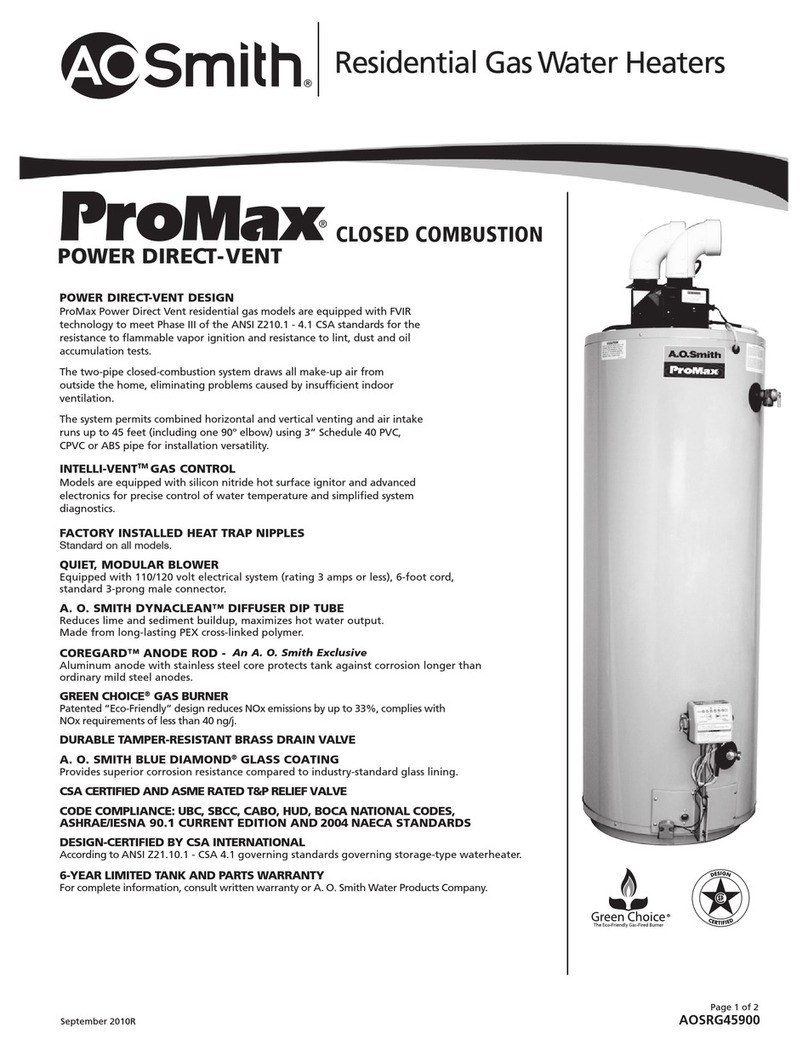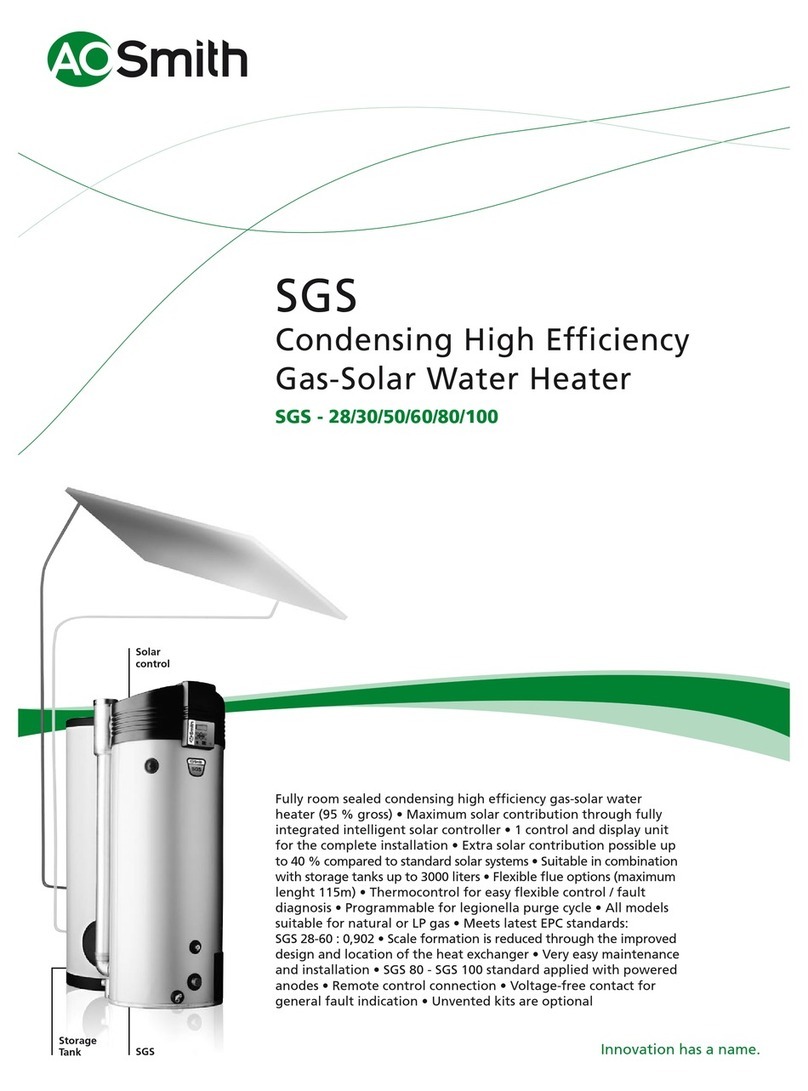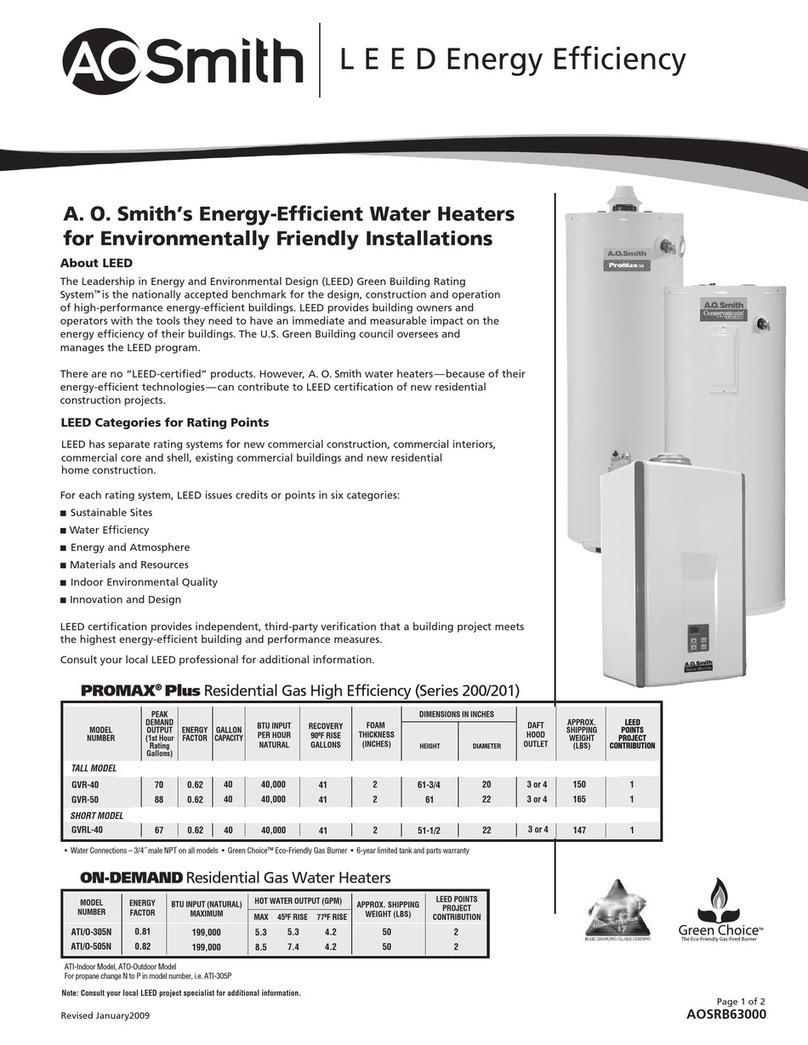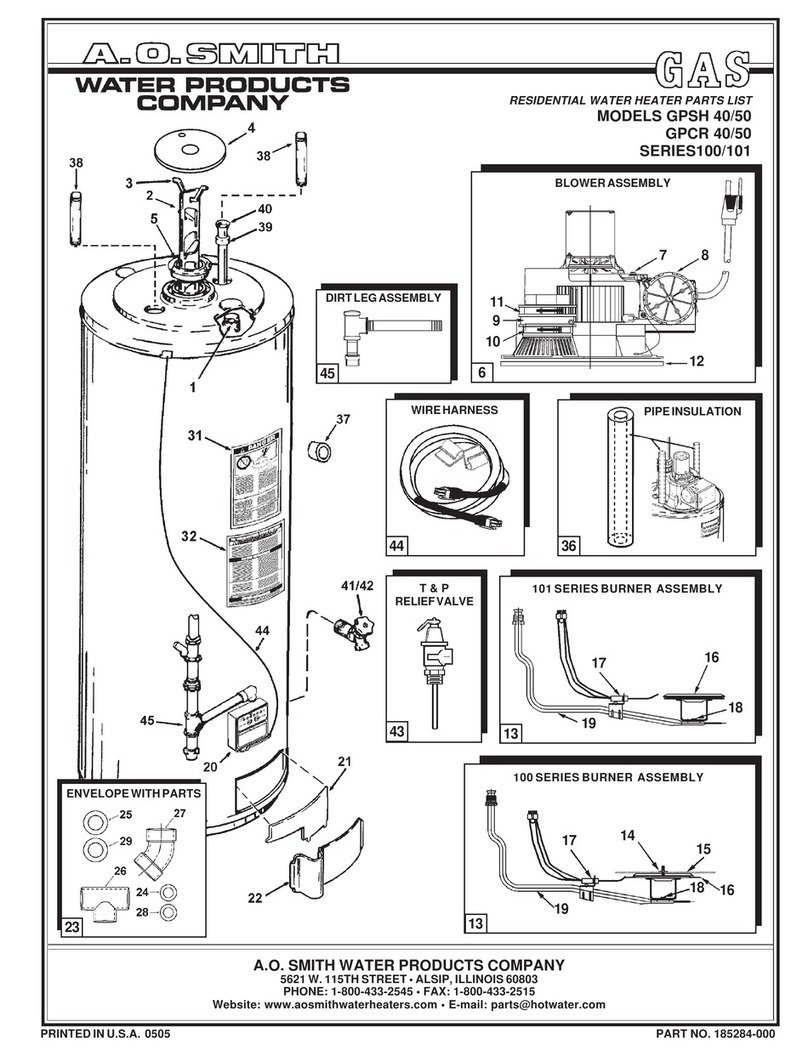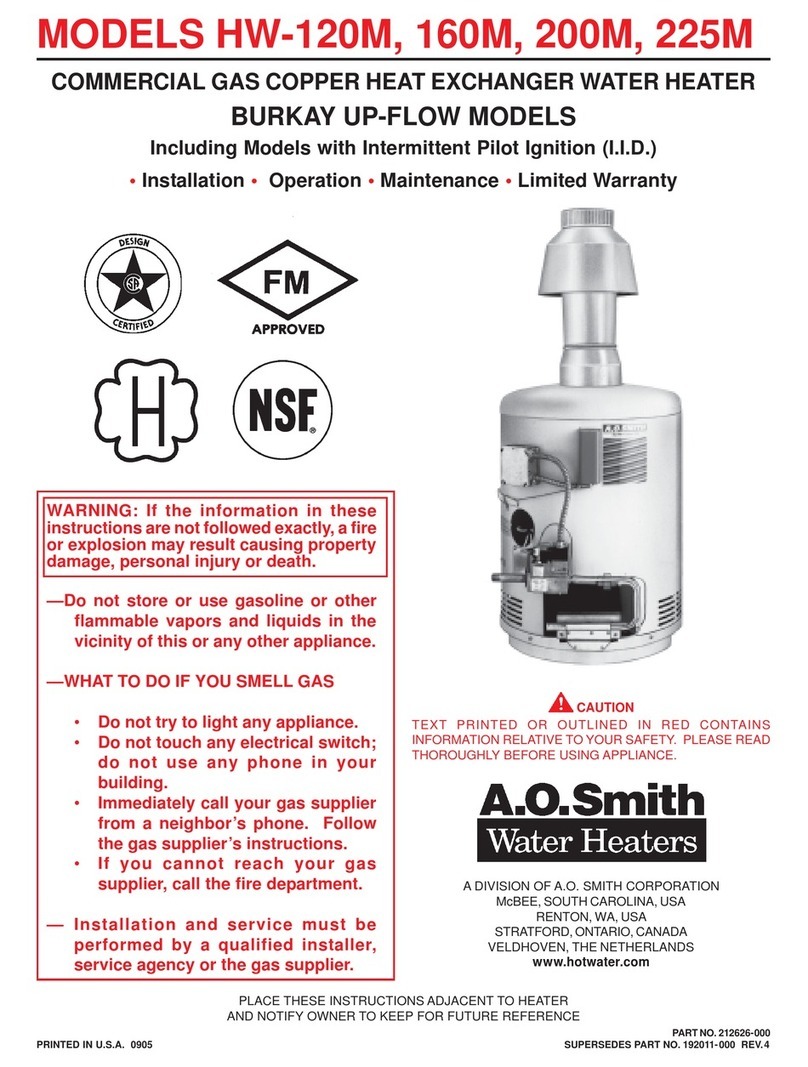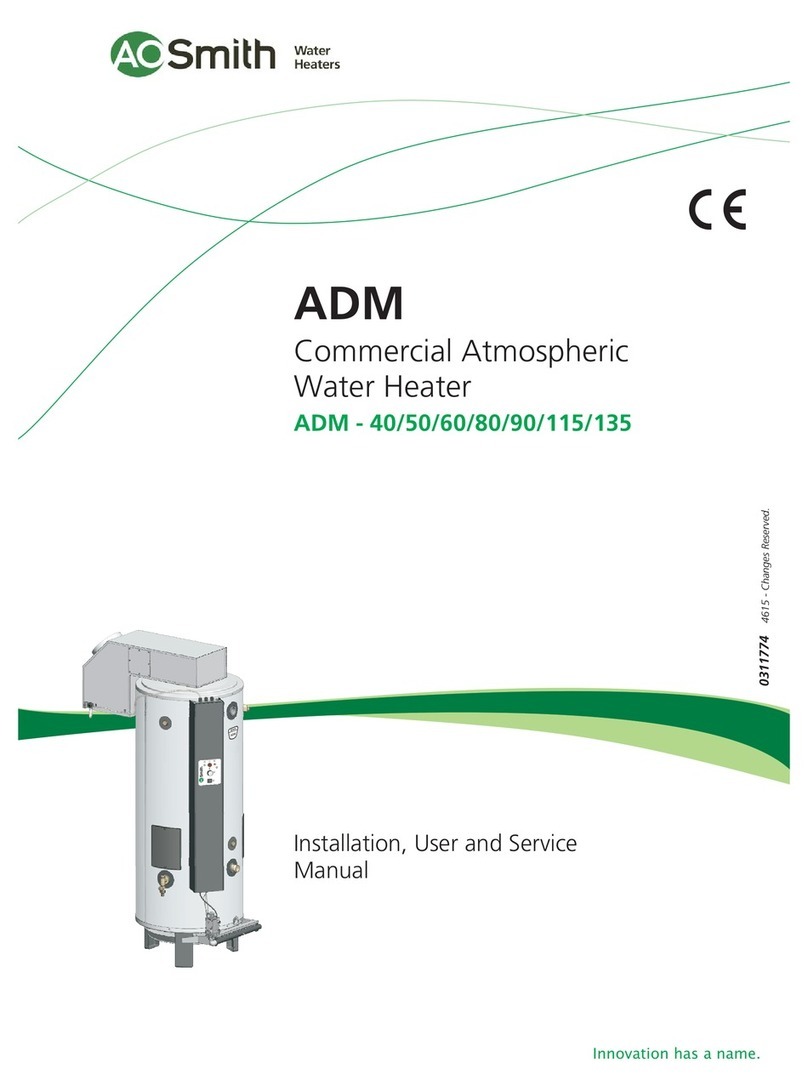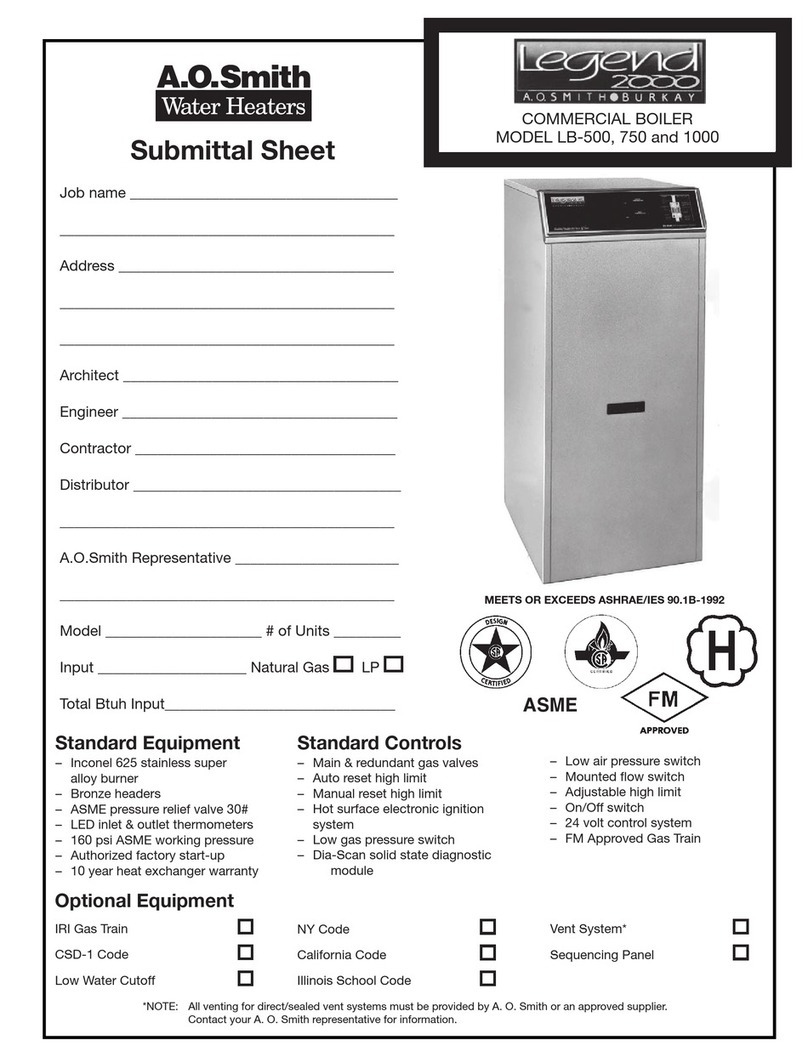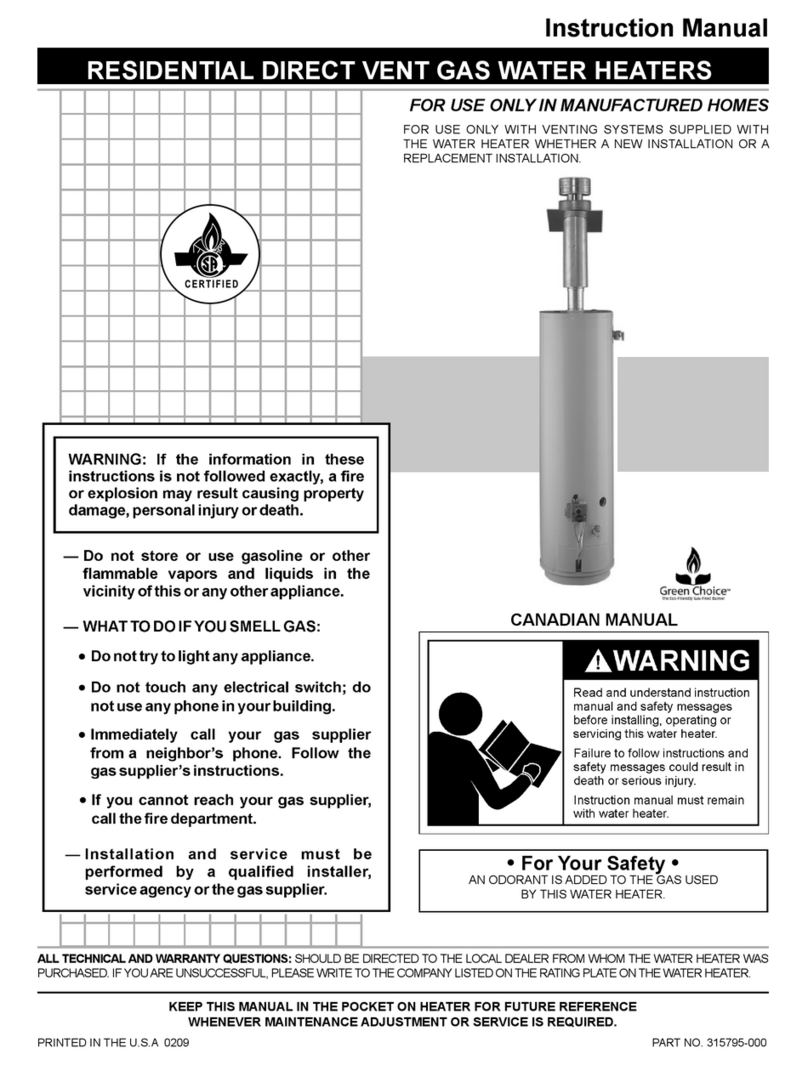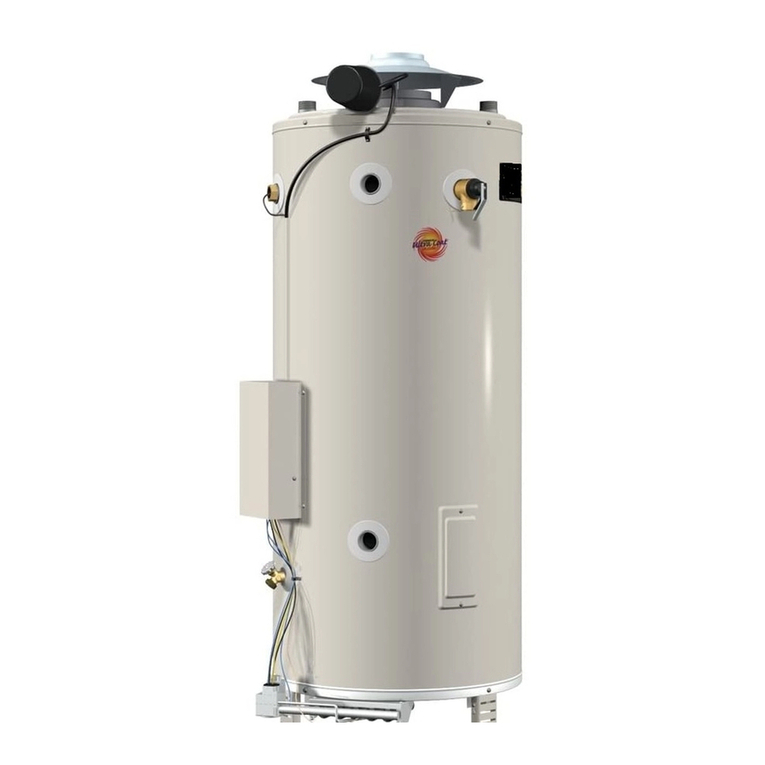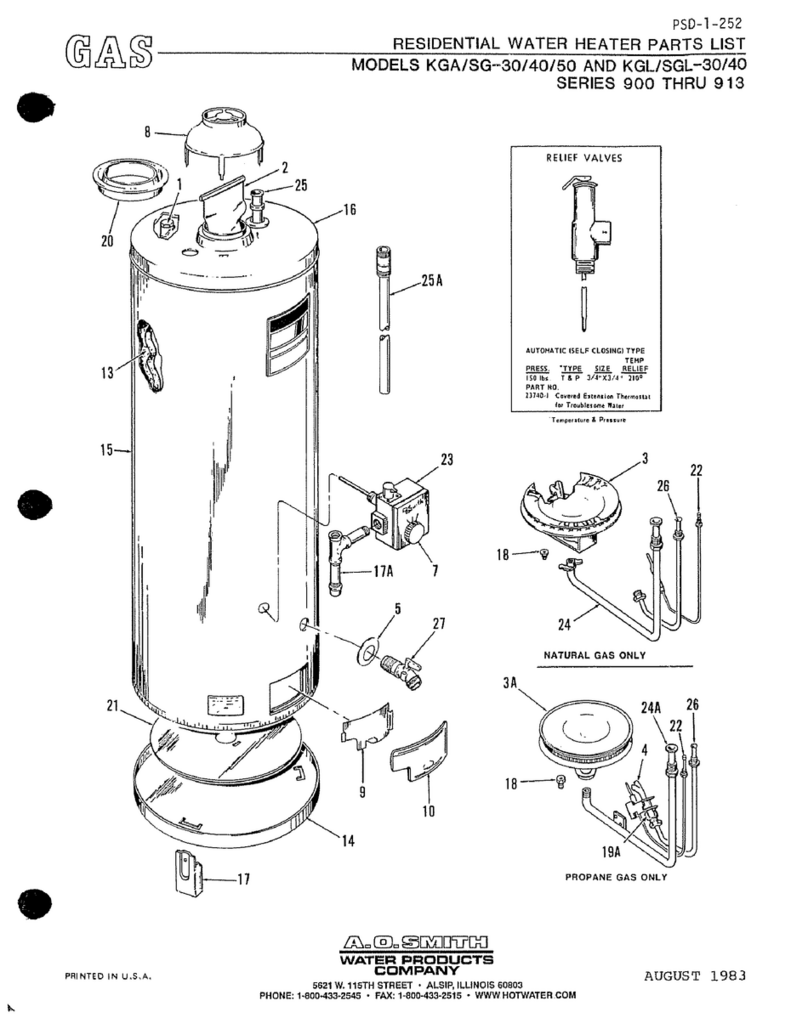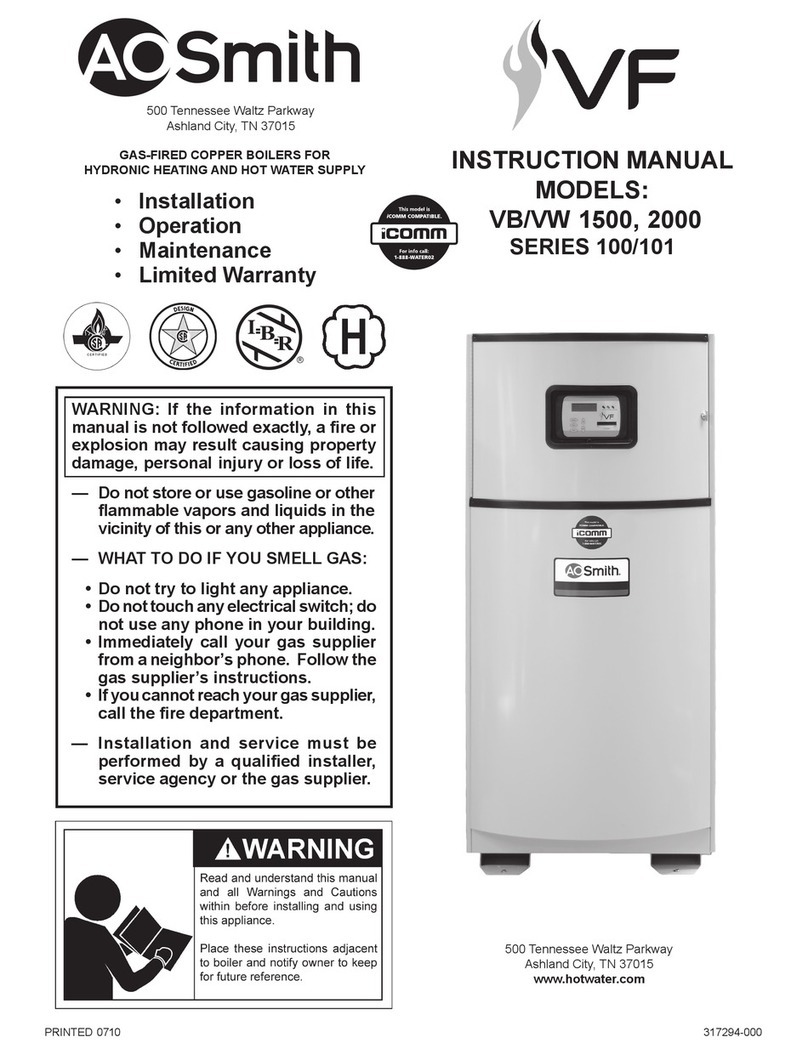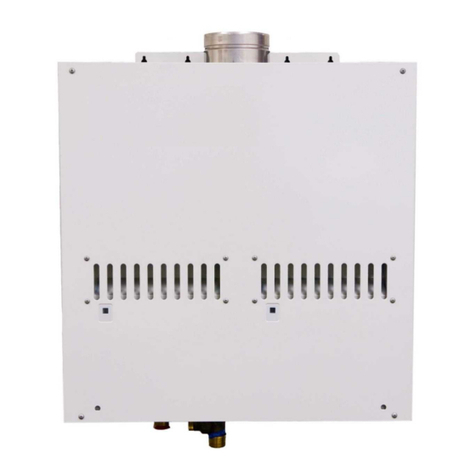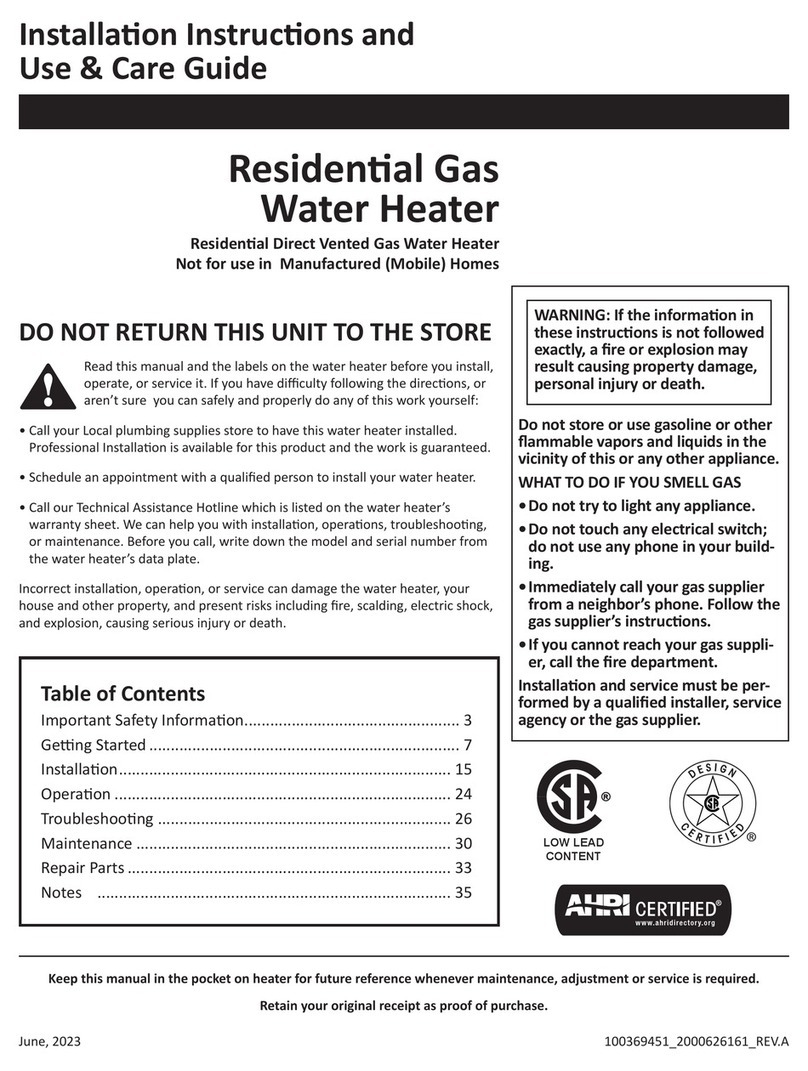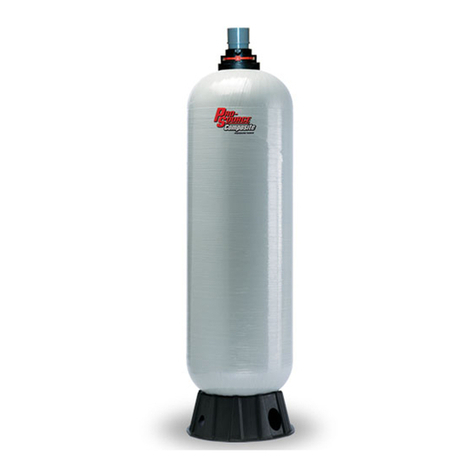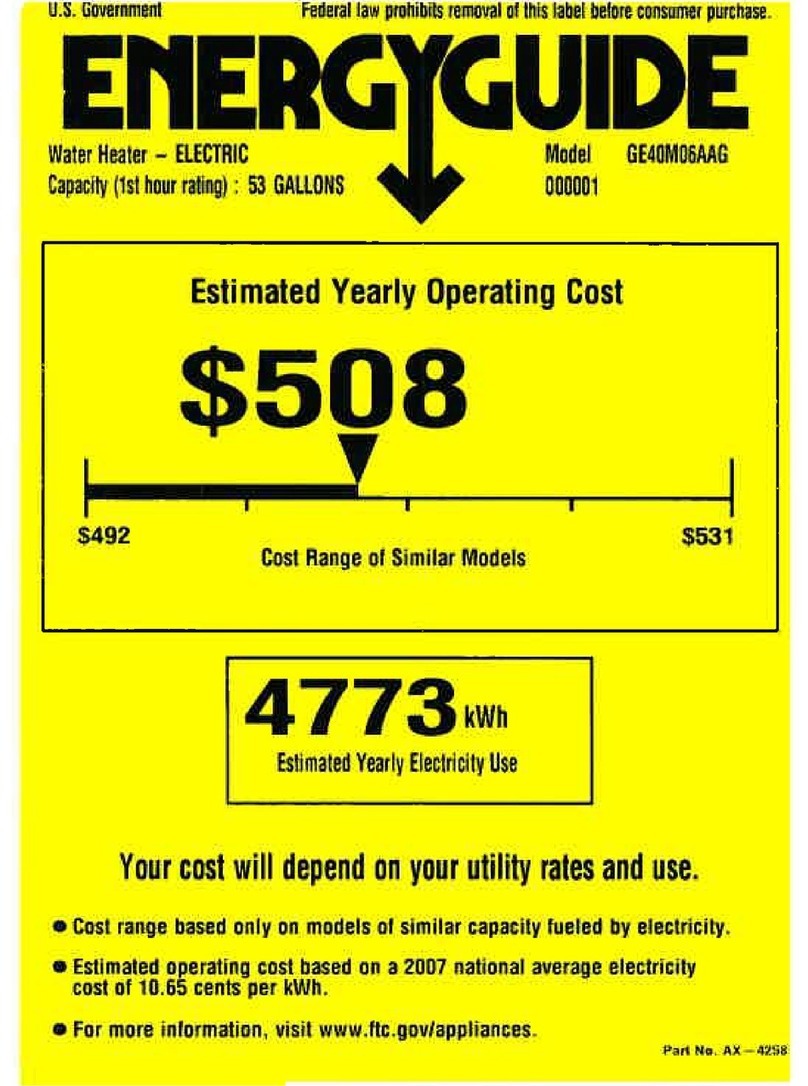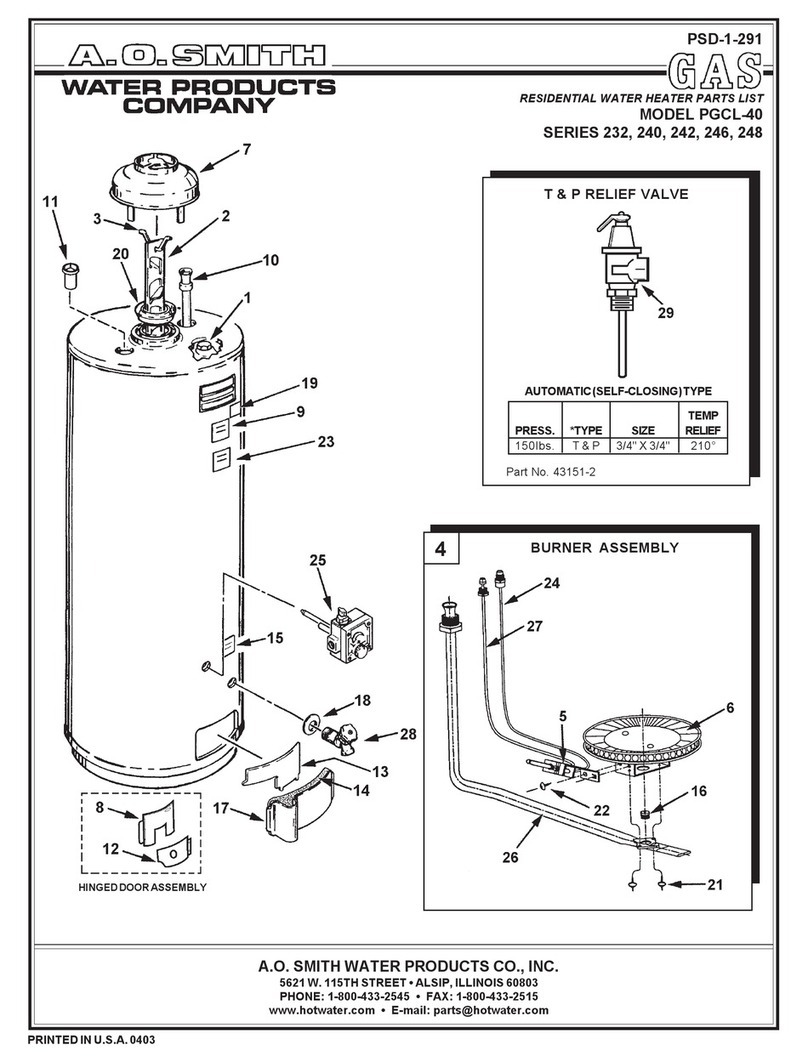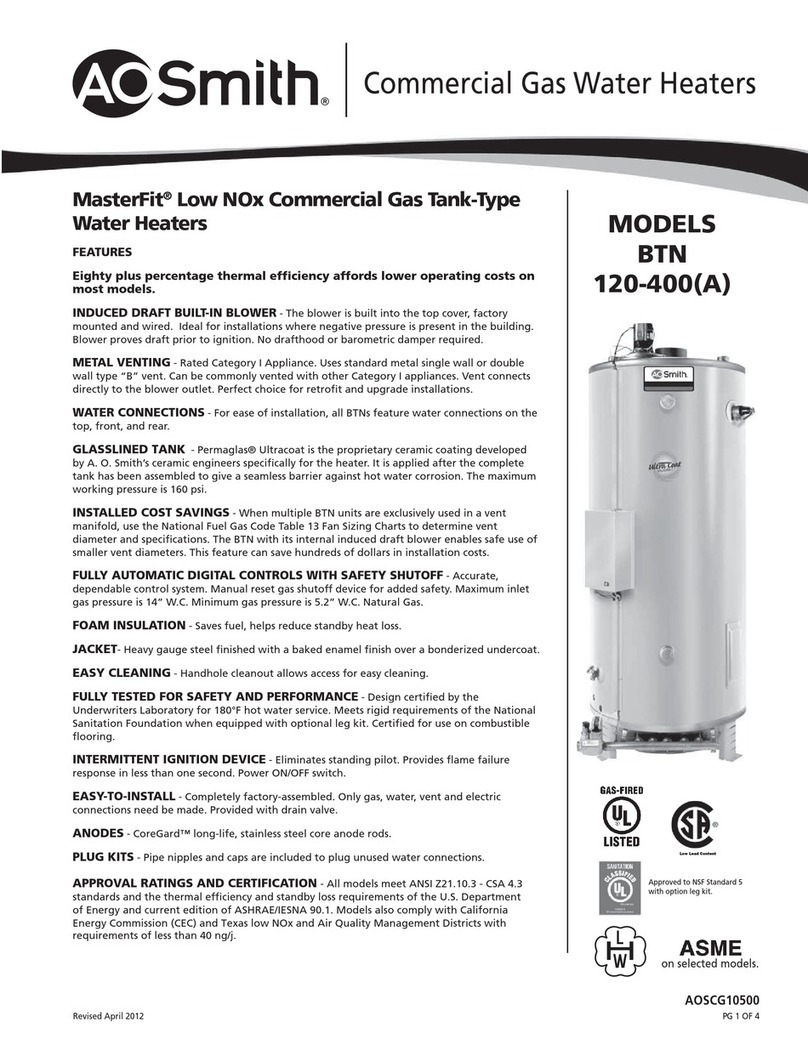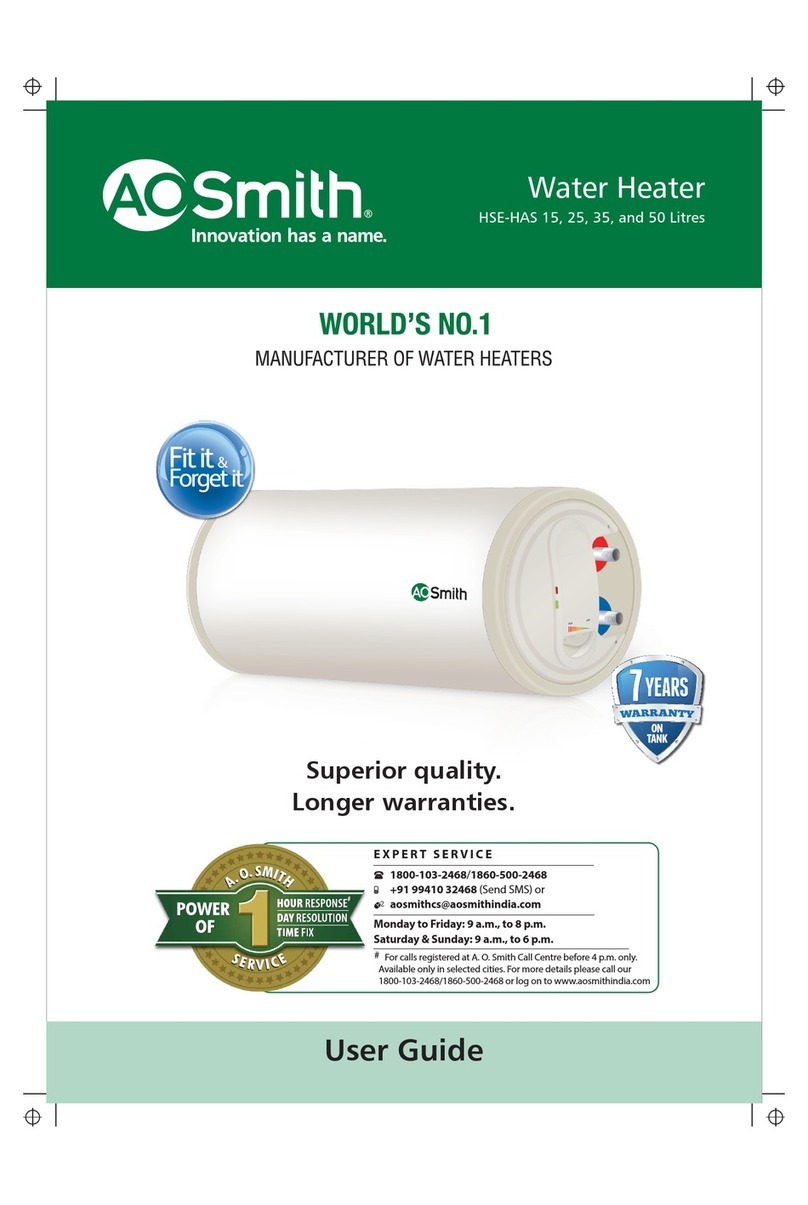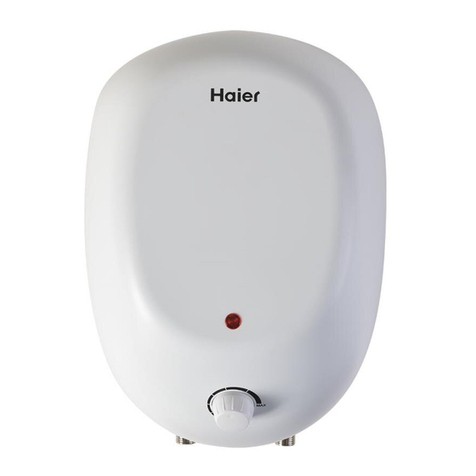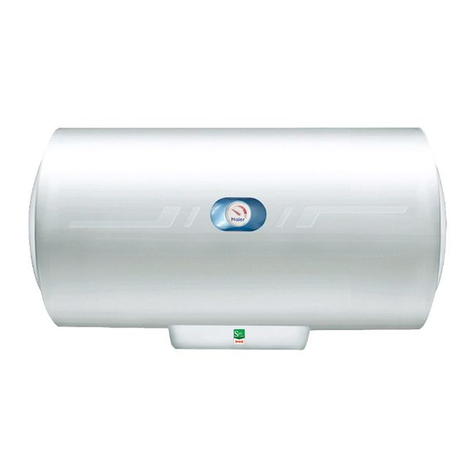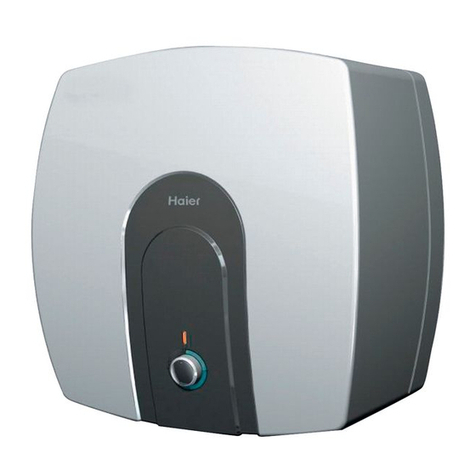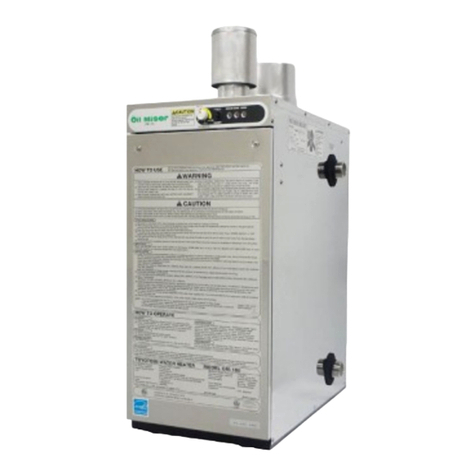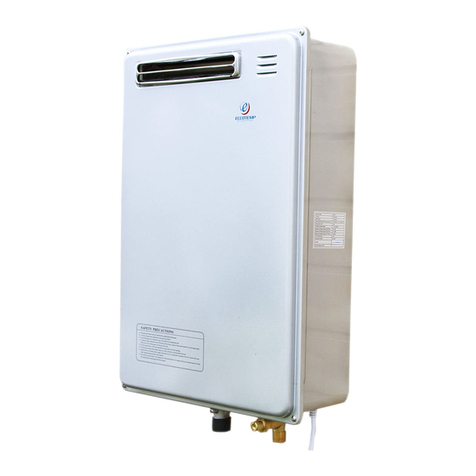
4
SAFEINSTALLATION,USEANDSERVICE...............................2
GENERALSAFETY ..................................................................3
TABLEOFCONTENTS ..............................................................4
INTRODUCTION ........................................................................4
Preparing for the New Installation ...................................4
TYPICALINSTALLATION ...................................................... 5-6
LOCATINGTHENEWWATERHEATER .....................................7
Facts to ConsiderAbout Location ............................... 7-8
InsulationBlankets ...........................................................8
CombustionAir and Ventilation forAppliances
Located in Unconfined Spaces........................................8
CombustionAir and Ventilation forAppliances
Located in Confined Spaces........................................ 8-9
INSTALLINGTHEWATERHEATER ......................................... 10
WaterPiping ..............................................................10-11
Temperature-Pressure Relief Valve............................... 11
GasPiping ......................................................................12
SedimentTraps ..............................................................13
BlowerAssembly Installation ........................................13
Vent Pipe Connection to Blower Assembly ................... 14
Venting and Installation ............................................ 14-15
LIGHTING&OPERATINGLABEL ............................................ 20
TEMPERATUREREGULATION ................................................ 21
FORYOURINFORMATION .....................................................22
Start Up Conditions ........................................................22
Condensate .................................................................... 22
Smoke/Odor....................................................................22
ThermalExpansion ......................................................... 22
Strange Sounds.............................................................. 22
OperationalConditions...................................................22
SmellyWater ..................................................................22
“Air” in Hot Water Faucets.............................................22
High Temperature Shut Off System ...............................22
PERIODICMAINTENANCE .......................................................23
Venting System Inspection ............................................23
Burner Inspection ...........................................................23
BurnerCleaning.............................................................. 23
Housekeeping .......................................................... 23-24
Anode Rod Inspection....................................................24
Temperature-Pressure Relief Valve Operation..............24
Draining ..........................................................................24
Drain Valve Washer Replacement ........................... 24-24
Service ...........................................................................25
LEAKAGECHECKPOINTS ......................................................25
REPAIRPARTS .......................................................................26
TROUBLESHOOTING ........................................................ 27-28
NOTES .............................................................................. 29-30
WARRANTY ...........................................................................31
Thank You for purchasing this water heater. Properly installed and
maintained,itshouldgiveyouyears of trouble free service.
AbbreviationsFoundInThisInstructionManual:
• CSA-Canadian StandardsAssociation
• ANSI-AmericanNationalStandardsInstitute
• NFPA- NationalFire ProtectionAssociation
• ASME-AmericanSocietyofMechanical Engineers
• GAMA-GasApplianceManufacturer’sAssociation
• UL- Underwriters Laboratories Inc.
This gas-fired water heater is design certified by Underwriters
LaboratoriesInc. underAmericanNationalStandard/CSAStandardfor
GasWaterHeatersANSIZ21.10.1 • CSA4.1 (current edition).
PREPARING FOR THE INSTALLATION
1. Read the “General Safety” section, page 3ofthis manual first and
thenthe entire manualcarefully. If you don’tfollowthe safety rules,
thewater heater will not operate properly. It could cause DEATH,
SERIOUSBODILYINJURYAND/ORPROPERTYDAMAGE.
Thismanualcontainsinstructions fortheinstallation, operation,and
maintenanceofthegas-firedwaterheater. Italsocontainswarnings
throughout the manual that you must read and be aware of. All
warningsandall instructions are essential to the proper operation
ofthewaterheater andyoursafety. Sincewecannot puteverything
on the first few pages, READ THE ENTIRE MANUAL BEFORE
ATTEMPTINGTOINSTALLOROPERATETHEWATERHEATER.
2. The installation must conform with these instructions and the local
code authority having jurisdiction. In the absence of local codes,
installationsshallcomplywiththeNationalFuelGasCodeANSIZ223.1/
NFPA54andtheNationalElectricalCode,NFPA70.Thesepublications
are available from The National Fire Protection Association, 1
BatterymarchPark,Quincy,MA02269.
3. The water heater when installed must be grounded in accordance
withthe local codes, or in the absence of localcodes:IntheUnited
States,theNational ElectricCode.ANSI/NFPA70.
4. If after reading this manual you have any questions or do not
understandany portionofthe instructions,callthe localgasutility or
themanufacturer whose name appears on the rating plate.
5. Carefullyplantheplace whereyou aregoing toput thewater heater.
Correct combustion,vent action,andvent pipe installationarevery
important in preventing death from possible carbon monoxide
poisoningandfires,seeFigures1and2.
Examinethelocationtoensurethewaterheatercomplieswiththe
“Locatingthe New Water Heater” sectioninthismanual.
6. ForCaliforniainstallationthiswaterheatermustbebraced,anchored,
or strapped to avoid falling or moving during an earthquake. See
instructionsfor correctinstallationprocedures. Instructions may be
obtained from California Office of the StateArchitect, 400 P Street,
Sacramento,CA95814.
7. Massachusetts Code requires this water heater to be installed in
accordancewithMassachusetts248-CMR2.00:StatePlumbingCode
and248-CMR5.00.
8. Complies with SCAQMDrule#1121anddistrictshavingequivalent
NOxrequirements.
INTRODUCTION
TABLE OF CONTENTS
